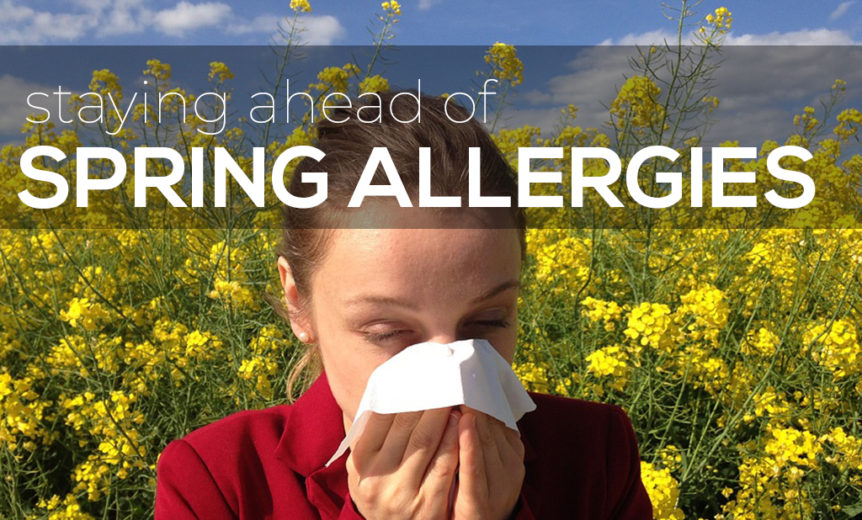By the time spring comes around each year, most of us are happy to see the cold weather go and eager to get outside and enjoy some sunshine. But for about 1/6 of Americans, this isn’t just a change in the weather but a transition from flu season to allergy season. Fortunately, allergies don’t have to keep you from enjoying your time outside. In this article, we are going to learn about allergies and what you can do to stay one step ahead of them so you can enjoy your spring.
What Triggers Spring Allergies?
In numerous locations of the United States, Spring-time allergies begin in February and last up until the early summertime. Tree pollination starts earliest in the year followed by grass pollination later on in the spring and summer season and ragweed in the late summer season and fall. In tropical climates, however, grass may pollinate most of the year. Moderate winter season temperature levels can cause plants to pollinate early. A rainy spring can also promote quick plant growth and cause an increase in mold, causing signs to last well into the fall.
Plants to Avoid
During a particularly bad pollen season like spring 2019 is predicted to be, it’s a good idea to avoid certain plants and situations so an allergic reaction is not as severe. The pollen from the following plants can be especially detrimental to allergy sufferers:
Ryegrass, Elm trees, Willow, Cottonwood, Chestnut flowers,
Birch trees, Aster, Beech trees, Oak trees, Mulberry.
Some other related triggers are:
smoke (campfires in summer, fireplaces in winter)
Insect bites and stings (usually in spring and summer)
Chlorine in indoor and outdoor swimming pools
Candy ingredients (Halloween, Christmas, Valentine’s Day, Easter)
How to Treat your Allergies
If you seem like you’re constantly getting sick, with a cough or head blockage, it’s time to see a specialist. You might think you’re sure pollen is causing your suffering, but other compounds may be involved also. More than two-thirds of spring allergic reaction sufferers in fact have year-round signs. Your best resource for finding what’s triggering your suffering and stopping it, not simply dealing with the symptoms, is an allergist.
Collaborate with your care provider to develop methods to avoid your triggers:
- Watch pollen and mold counts. Weather reports in newspapers and on radio and tv typically include this info throughout allergy seasons.
- Stay indoors if you need to.
- Keep all windows closed while you are driving
- Keep doors and windows shut in the house
- To prevent pollen, know which pollens you are most allergic to and then check pollen counts.
- In spring and summertime, during tree and grass pollen season, levels are highest at night.
- Vacuum regularly and don’t let dust build up.
- Don’t dry your clothes outside.
- Shower, clean your hair and change your clothes after you’ve been working or playing outdoors.
- Use a NIOSH-rated 95 filter mask when mowing the lawn or doing other tasks outdoors, and take appropriate medication ahead of time.
Allergy Medications Are Available
There are several different classes of drug used to treat allergy symptoms. The most common include antihistamines, nasal steroid sprays, and asthma medications.
All of which have a different mechanism of action. Some may be used to treat acute symptoms while others aim to achieve longer-lasting relief. The choice depends largely on the types of symptoms you have as well as their severity.
If your allergies are out of control, there are medications available to help you feel better and relieve symptoms. Call Lakeside Medicine at 208-290-3302 or come in and see Kelly today to properly evaluate the situation.


